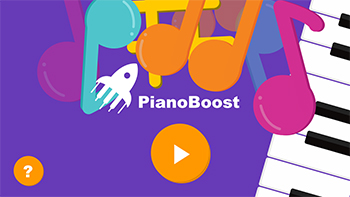
Pianoboost is an interactive app developed by
Dr Frelet de Villiers, lecturer in the Odeion School of Music
at the University of the Free State.
Photo: Supplied
“I got the idea after watching my children play Sing Star on PlayStation, where the game can detect how accurately you sing. I realised this could turn my dream into a reality if I looking into the possibility of an app that can do note recognising,” says Dr Frelet de Villiers, developer of the Pianoboost app, about her brainchild.
Dr De Villiers, lecturer in the Odeion School of Music (OSM) at the University of the Free State (UFS), developed this interactive app for piano learners to learn music. She started the developing process three years ago, but the project only got momentum when she approached LivX, a digital developing company in Pretoria, six months ago.
Useful for other instruments
Pianoboost has been live since 9 February 2017 and already received positive reviews, with a five-star rating on the Google Play Store. “In my experience as piano teacher, I know that learners struggle to learn their notes. They can’t recognise the note on the music sheet and therefore cannot play it on the piano,” says Dr De Villiers. Although this app is developed for piano, it is also successfully used for other instruments like the marimba, violin, and guitar, because it can pick up sounds from almost any instrument.
Ideal for use in academic programme
There are students in the certificate and diploma modules at the OSM who haven’t received any formal music training. Therefore, the app is ideal for them to use. “We have instrument-specific methodology in our degree courses. So, those students could also be exposed to the app for use in their own teaching of young learners,” says Dr De Villiers.
Different features sets app apart
The app, available on Android devices, has instant music recognition and impressive features that already sets it apart from existing learning apps. It is used on a real acoustical piano (you do not need to plug the tablet into a keyboard), has instant note recognition, shows the correct position of the note on the piano when you are wrong, and works like a flash card system, to name a few. “By using the app, you also learn the names of notes whether you played it right or wrong,” says Dr De Villiers.